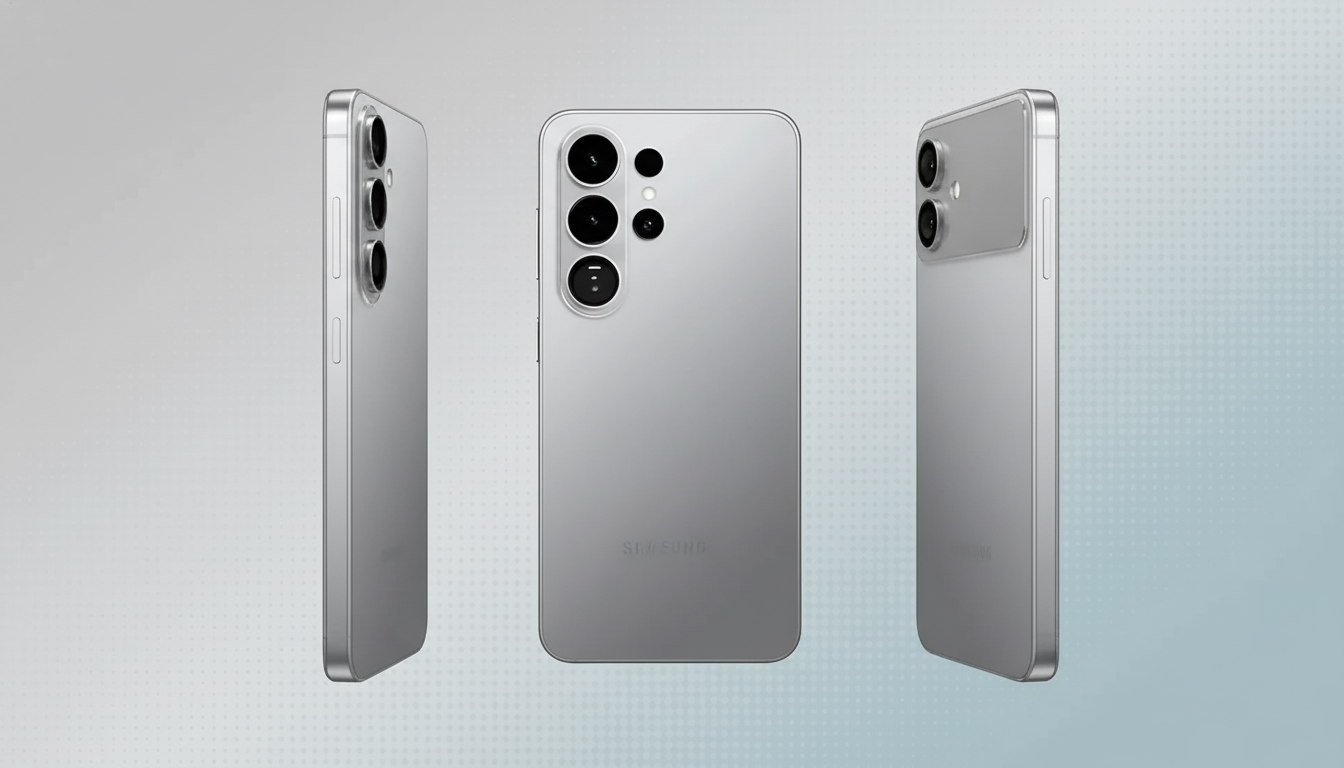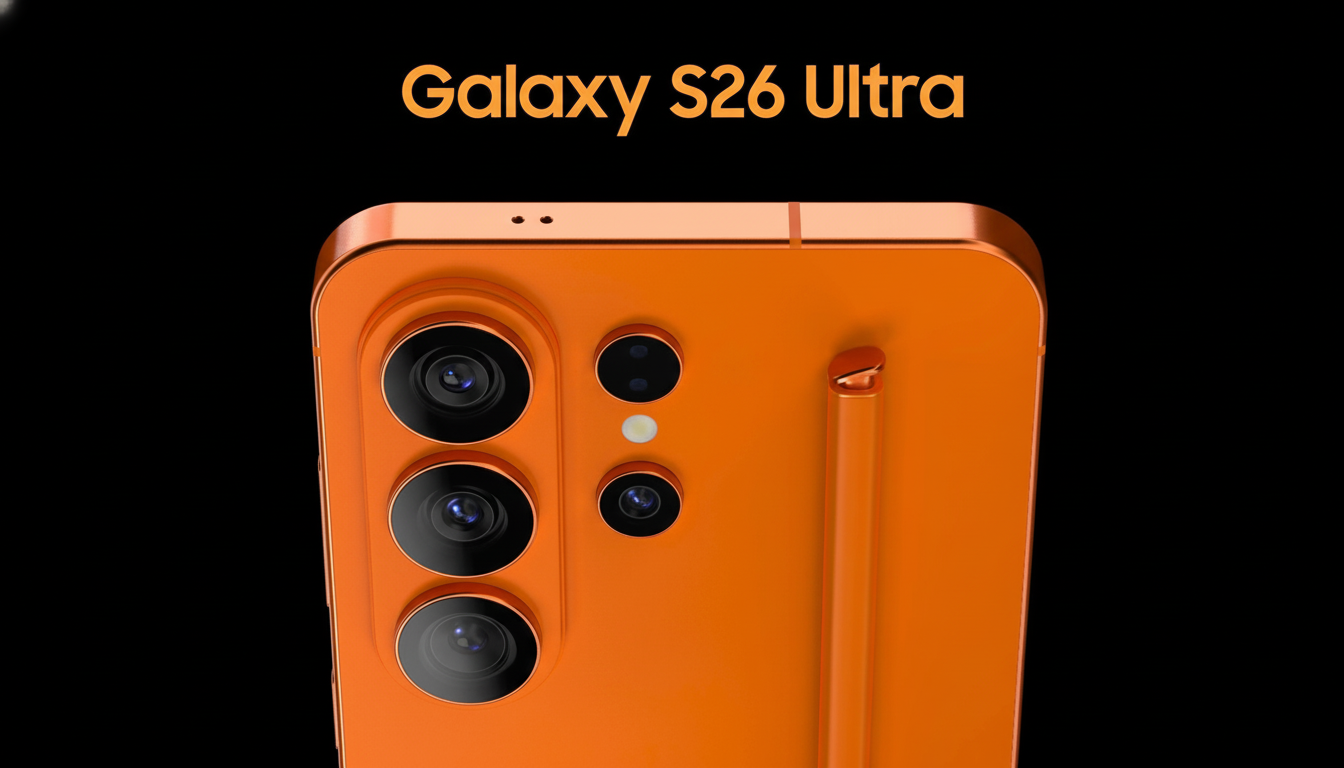If early Galaxy S26 leaks (and they are still very early) don’t change, Samsung’s smallest flagship could once again play it too safe at its most crucial size. That hasn’t always been the case.
If you’re after a compact phone and don’t want to skimp on power or battery life, the better option here seems to be the Vivo X300 — a small phone that packs more punch than its height- and width-challenged appearance would suggest.

What the Galaxy S26 leaks tell us so far on specs and design
Supply chain gossip and regulatory filings suggest a vanilla Galaxy S26 that plays it safer with specs. Now, there are new signs once again pointing to an ordinary-sounding name (not that ridiculous “Pro”) and a 4,300mAh battery with 25W wired charging. Camera hardware is also rumored to mirror recent generations, with the company’s ongoing practice of notching a new higher-resolution 50MP main sensor, slotting into the same design as we first saw on the S22 series.
On paper that’s a hard ask if the price is once again what you would typically find in the $800 range. The smaller of the S series is still a joy to hold, but year over year, it’s been short on substantial spec improvements. For power users looking for small without sacrificing on specs, that’s a gap just begging to be filled.
The compact one with bigger hardware and battery gains
Enter the Vivo X300. Its footprint stays manageable with a 6.31-inch screen, but the phone stuffs in a 6,040mAh battery — a size that outpaces by more than 1,000mAh the typical 5,000mAh pack inside “Ultra” phones. That alone upends expectations for battery life in a device this small. If a phone that lasts from breakfast to bedtime with room to spare is important to you, this is the spec that matters most.
There are the same uncompromising charging options: 90W wired and 40W wireless. Vivo, meanwhile, thinks fast charging should be wielded like a tool, not suffer from liabilities, and does so with built-in safety nets such as the option to cap the charge at, say, 80%, lock-screen charging speed controls when using the included 90W brick out of the box, and optimized charging schedules. Those choices are consistent with industry best practices that can slow cell aging by steering clear of sustained high-voltage top-offs, a nuance lost in the 25W-versus-90W debate.
Under the hood, the Dimensity 9500 won’t rival Qualcomm’s best Snapdragon in raw benchmarks, but it is a modern flagship-class chip that can handle hours of gaming or heavy multitasking. Then there’s the fact that Vivo matches up these silicon specs with generous base storage (256GB) and an IP69 rating — a notch above the standard IP68 — which means it can resist high-pressure water jets; not something you typically see in sleek flagships. There’s even OfficeKit for seamless desktop integration for those who bounce between a phone and laptop workflow.
Cameras that move the needle on small flagship phones
Whereas Samsung’s mini flagships have relied on known sensors, the X300 goes modern: a 200MP main camera (Isocell HPB class), a 50MP 3x periscope telephoto, and a 50MP ultrawide. The result is a small phone that feels big-camera — fast focus, bountiful detail, and organic depth at 3x without all the cramped, noisy look you can sometimes get from old-school 10MP telephoto modules.

Or dare I say video features, which read like a creator checklist: 4K60 portrait video for shallow-depth clips, 4K120 LOG for more flexible color grading, multiple color profiles, and a street mode so you can get quick preset looks without thinking twice about it.
Of course, the long-range zoom still tilts in favor of the X300 Pro; however, at more typical focal lengths the regular X300 covers more use cases than what we hear will be offered by the base S26 model.
Software longevity, AI tools, and global availability
Samsung isn’t without advantages. Look for a best-in-class update policy on the S26 line; the company has raised the bar with multi-year OS and security commitments on its most recent flagships. Galaxy phones also offer a more comprehensive range of AI tools, including live translation, note summarization, and text generation, that rely on both on-device and cloud computing models. If software support for years to come and first-wave AI are more important to you, Samsung is still the pace-setter here.
It may eventually come down to what is available. Samsung is about as global of a company as they come, and that includes the US. Vivo’s X300 is heading to India and a number of European countries, including Italy, Spain, and Poland, along with Mexico and parts of Southeast Asia; buyers in the US or UK will have to import it. Outside of China, its value will ultimately depend on pricing, but the hardware proposition is already distinct.
For shoppers seeking a compact flagship experience
Assuming the Galaxy S26 leaks are true, that base model seems like a mild tweak and not an actual jump. The Vivo X300, in comparison, seems purpose-built for those who want a small phone without compromise: large battery, fast and flexible charging, new cameras, high performance, with rare IP69 durability.
Opt for Samsung if you desire the widest AI feature set, longest updates, and easy availability. But if you’ve been holding out hope for a (relatively) compact Android that doesn’t compromise on the experience of owning a top-tier phone, then the X300 is the one to buy.

